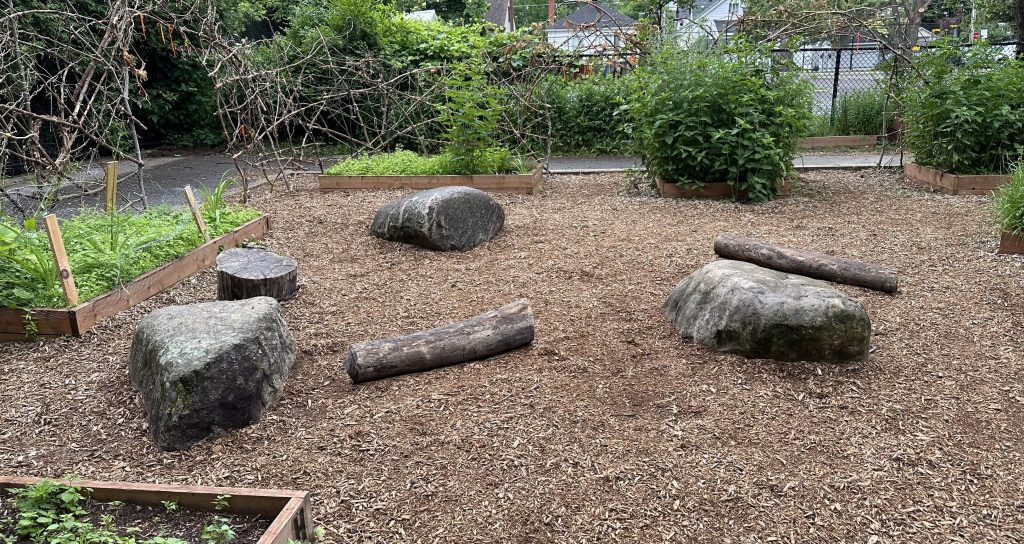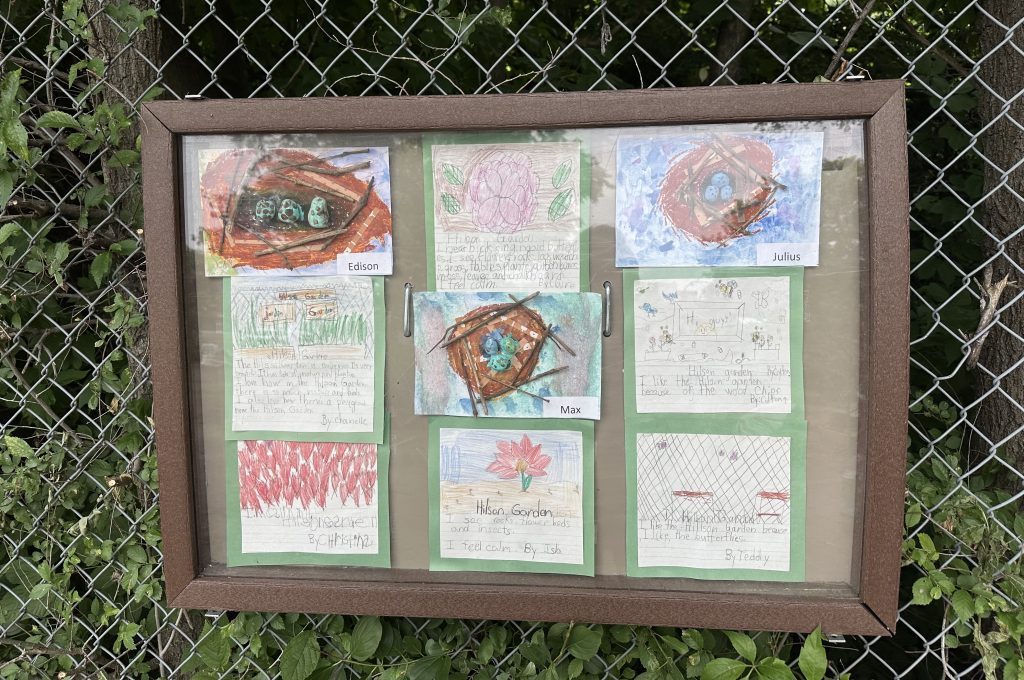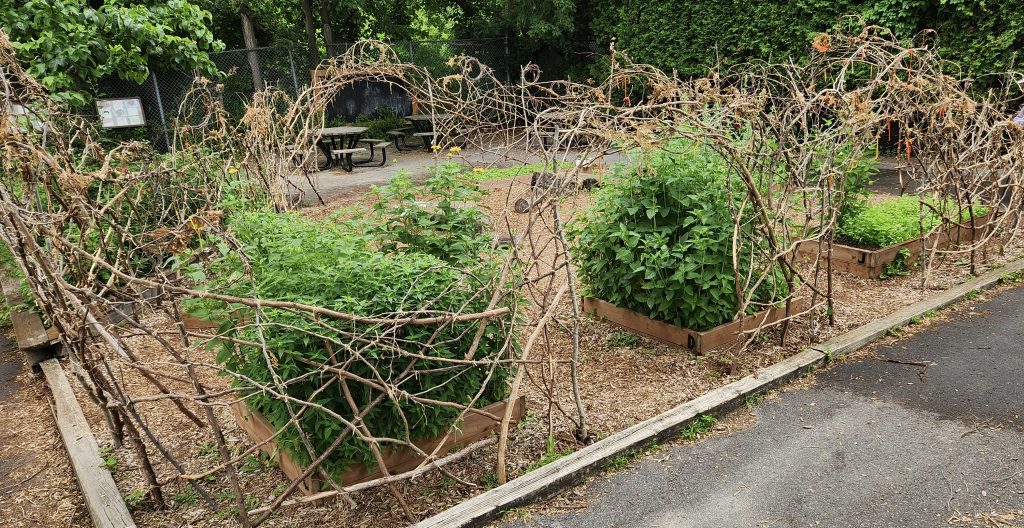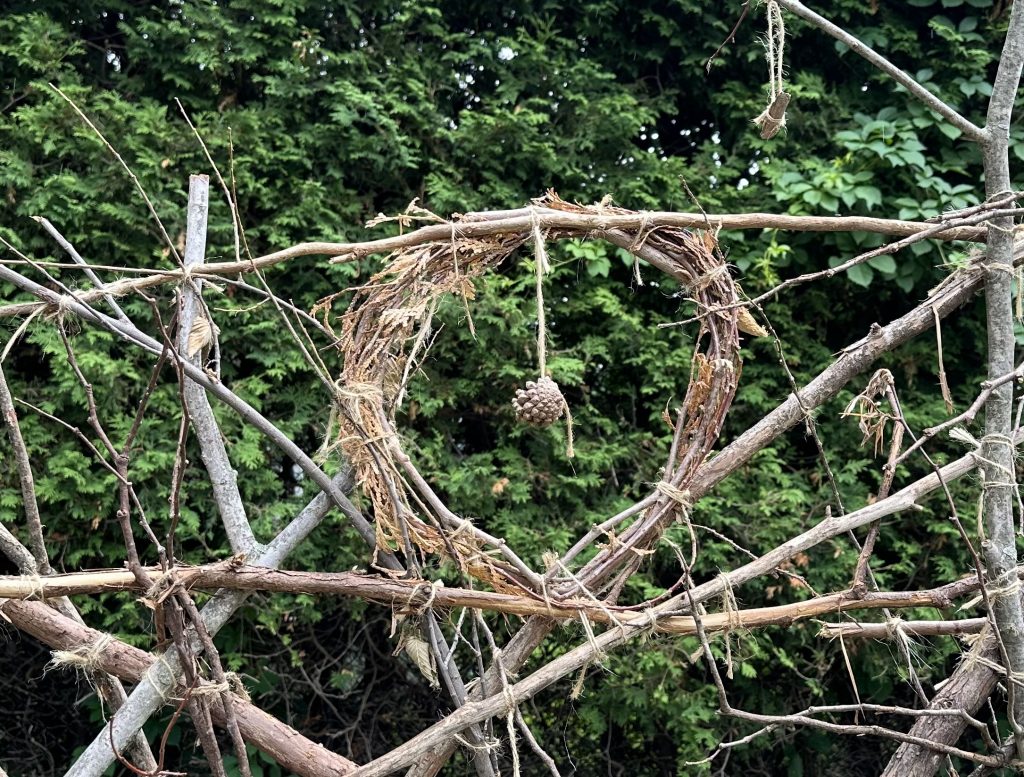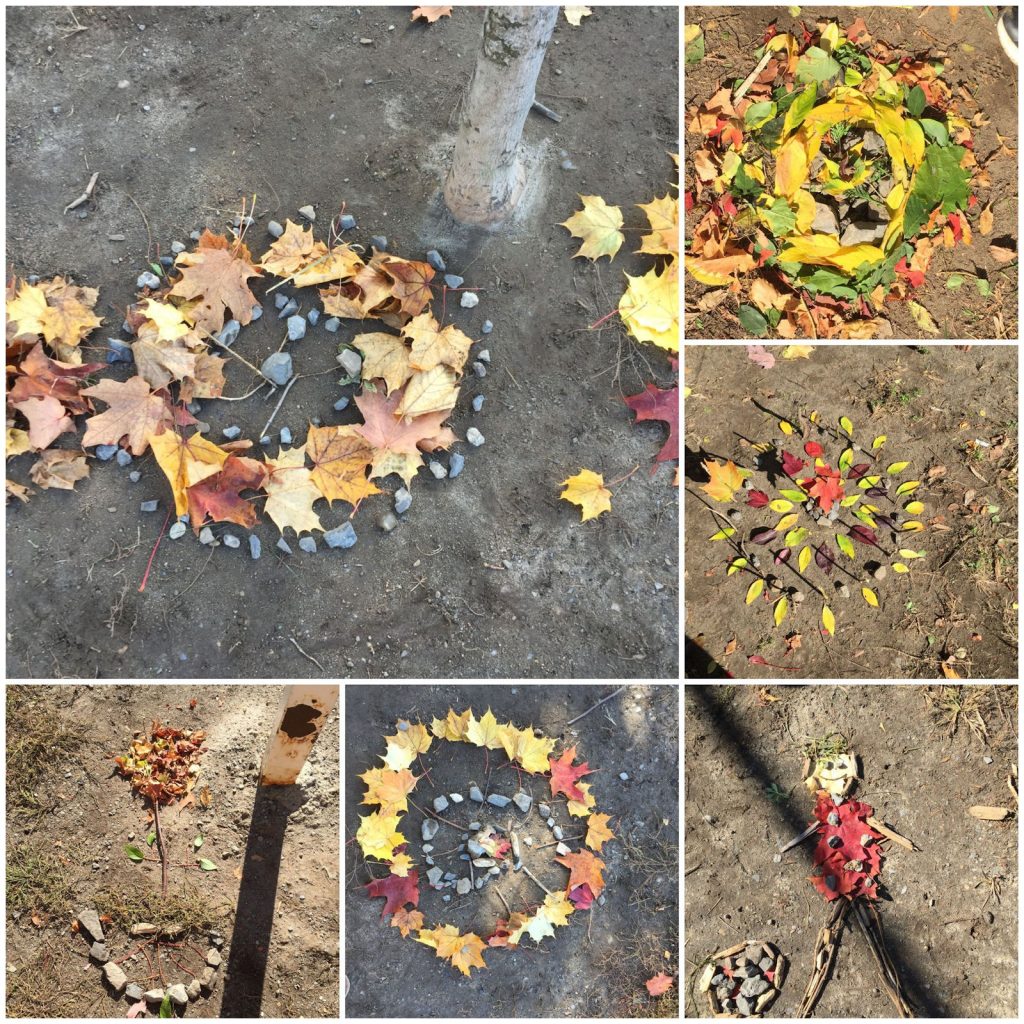by Berit Erickson
As a long-term goal, Wild Pollinator Partners would like to see a native plant pollinator garden in every Ottawa school. School gardens can offer educational and mental health benefits. According to the Master Gardeners of Ottawa-Carleton, “More greenspace… around schools and in surrounding neighbourhoods should be a priority to offset the negative effects of heat on learning, and to reduce the potential cost of providing air conditioning in all schools.” Studies also show that “children’s imaginations, social and mental health development are all positively influenced by access to greenspace.”
Yet, many school gardens that start with great enthusiasm, are then neglected over the summer holidays, they fall into disuse as teachers and involved parents move to other schools, or miscommunication sees plants removed to satisfy other priorities.
To encourage and support local school pollinator gardens, WPP gathered experienced school garden stewards together during tours to share our experiences, challenges, and solutions. Last year, we visited Churchill Alternative School’s butterfly garden (see Down to the nitty gritty: creating the Churchill Alternative School butterfly garden). This year, on Saturday, June 22, the rain held off long enough for our visit to Hilson Avenue Public School’s pollinator garden in Westboro.
Hilson’s garden is part of a larger outdoor classroom that was created more than a decade ago. It’s located in an out-of-the-way corner behind the parking lot and is shaded by mature trees growing on the adjacent property. Raised beds contain a variety of plants, mostly native, and surround a seating area made of boulders and logs. Several hexagonal picnic tables sit on the pavement beyond the planter boxes.
On the nearby chain-link fence, multiple shadow box frames feature nature-inspired artwork by students.
Creating the Hilson outdoor classroom
Li-Shien Lee, a former teacher at Hilson and a member of the Monarch Teacher Network, led the creation of this outdoor classroom. She told us how, back in 2012, she applied for school council funding. In her application, she included a charming video in which students described what the site currently looked like and what they hoped to do there once the outdoor classroom was built. The children were persuasive and they received funding for a multi-year greening project.
While at Hilson, Li-Shien took full advantage of the educational potential of the pollinator garden, incorporating it into her curriculum in subjects from art to literacy, from math to science. She also put up posters and discussion prompts in the staff room to encourage other teachers to use the pollinator garden in their classrooms.
As with many school pollinator gardens, once the garden’s champion moved on, the native plantings were no longer maintained. This also happened to Hilson’s garden, as the beds are in want of weeding. The issue of continued school garden stewardship and maintenance came up repeatedly during our discussions.
Whimsical new fence
Even though the Hilson pollinator plantings needed some TLC, the outdoor classroom continues to be appreciated and enjoyed. Recently, the raised beds were enclosed in a delightful “garden room,” designed by artist-in-residence Mark Walter and constructed by student helpers.
The fence is composed of curving, intertwined branches tied together where they intersect using twine and coloured yarn. Between the planters, arching gateways welcome visitors into the space. Throughout the fence, wreaths made by students serve as portals to the views beyond, and hanging pine cones dangle in the breeze.
History of school gardens in Ottawa
Local garden historian, Lynn Armstrong, also attended the Hilson tour. Lynn maintains the gardens at Mutchmor Public School in the Glebe. In 2003, she began by recreating an historical garden at Mutchmor, then adding a new pollinator garden.
Gardening was once part of the Ontario school curriculum. Although it isn’t anymore, children can still learn a lot from a small school pollinator garden: growing plants from seed, observing pollinators and other insects. Lynn partnered with a grade 4 teacher whose students grew plants for the garden and raised butterflies to be released there.
Although dedicated to maintaining the Mutchmor gardens for many years, Lynn has also struggled with forging connections and communicating with ever-changing school staff and board maintenance crews.
Continuity and maintenance
We were also lucky to have Erinn Ladouceur, chair of the Catholic School Parents’ Association and Greening Lead for the St. Elizabeth Ann Seton School Council, where they started a pollinator meadow in May 2023. Clare Grosskleg, who started a pollinator garden in her local park, became a catalyst for numerous school gardens, and is now CEO of the National Children’s Botanical Garden was also in attendance. Since the challenges of continuing stewardship and ongoing maintenance of school pollinator gardens was a recurring theme, both shared lots of practical advice.
Here are a just a few of the things we learned. We’re hoping to turn the information into a “how to” blog post to make it easy for parents and teachers at all Ottawa’s schools to build on the collective knowledge and start a pollinator garden.
- Participants – It takes more than a gardener. It takes permission from the school board and school principal. Teachers who see the value of learning outside, interacting with nature. Kids who want to learn how the parts of their schoolyard ecosystem interact. Parents who can help, especially in summer. A custodian who understands.
- Communication – the school principal can mention the garden in a fall bulletin, reminding teachers and parents about the garden and whether work is needed before winter. In spring, a school-wide event – such as a presentation by the Monarch Teacher Network – raises interest and prompts parents and others to volunteer to plant, water, weed.
- Cheerleading – A passionate teacher can make a huge difference. We learned how Wayne Van Sickle, former teacher at Hilson, posted observations from the garden, sent out a newsletter, installed the window boxes on the fence so that kids could display their garden-related projects.
- Public relations – Labeling plants goes a long way toward education and understanding. Knowing the name of a plant and its use to pollinators reminds everyone of the important role native plants play in the health of the environment. It also shows how a native plant garden can meet our standards of what a garden should look like.
- Ongoing contact among all the people mentioned above can make the garden a huge success.
